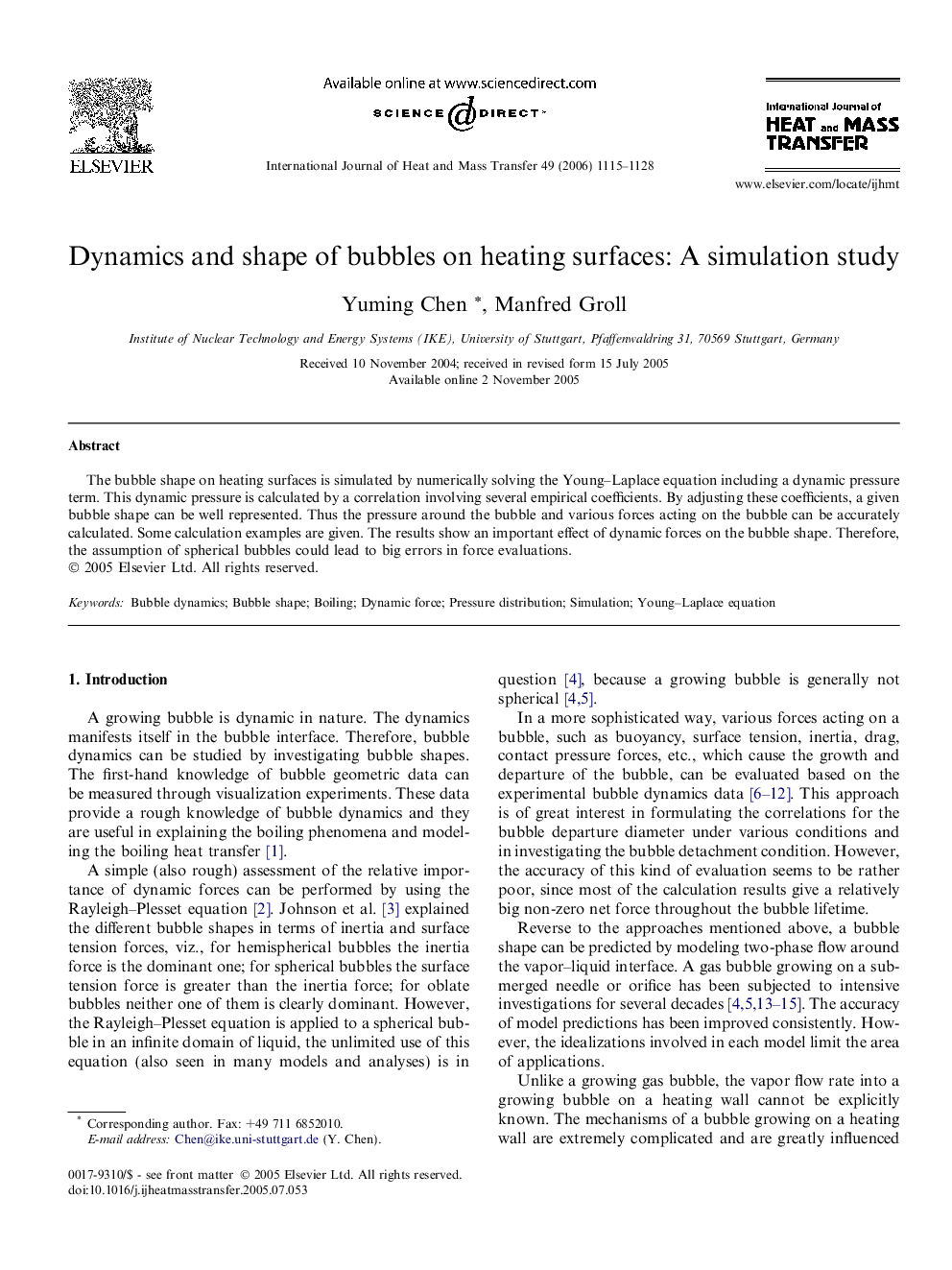| Article ID | Journal | Published Year | Pages | File Type |
|---|---|---|---|---|
| 661545 | International Journal of Heat and Mass Transfer | 2006 | 14 Pages |
Abstract
The bubble shape on heating surfaces is simulated by numerically solving the Young–Laplace equation including a dynamic pressure term. This dynamic pressure is calculated by a correlation involving several empirical coefficients. By adjusting these coefficients, a given bubble shape can be well represented. Thus the pressure around the bubble and various forces acting on the bubble can be accurately calculated. Some calculation examples are given. The results show an important effect of dynamic forces on the bubble shape. Therefore, the assumption of spherical bubbles could lead to big errors in force evaluations.
Keywords
Related Topics
Physical Sciences and Engineering
Chemical Engineering
Fluid Flow and Transfer Processes
Authors
Yuming Chen, Manfred Groll,
